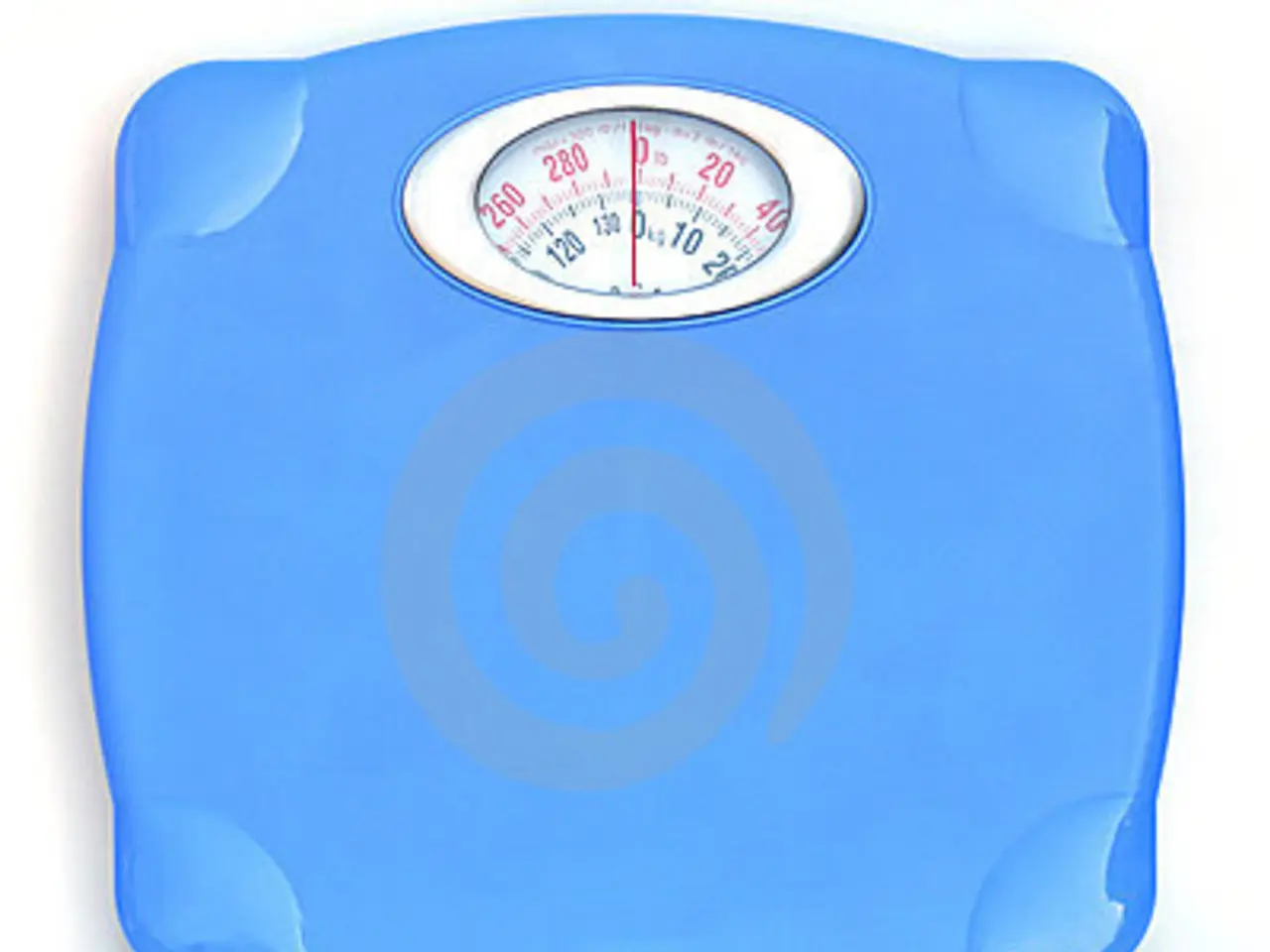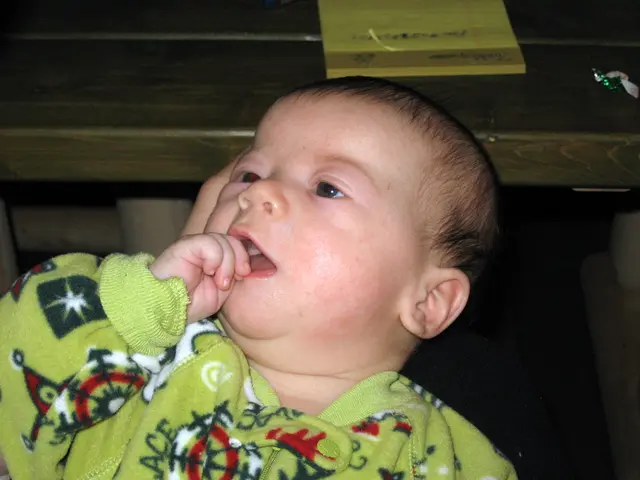Strategies for Precise Body Fat Measurement: Exploring Reliable Techniques and Ranges
In the quest to maintain a healthy lifestyle, understanding one's body composition is crucial. One essential aspect of this is body fat percentage, which can be determined using various methods, ranging from simple home techniques to advanced clinical procedures.
Air Displacement Plethysmography (ADP) and Dual-energy X-ray absorptiometry (DEXA) are two such clinical methods that calculate body fat composition based on body mass and volume, and precise body fat, lean muscle, and mineral composition, respectively. However, these methods are not practical for home use.
For those seeking to measure body fat percentage at home, three methods stand out: Skinfold Calipers, Bioelectrical Impedance Analysis (BIA) Devices, and the Tape Measure Method.
**Skinfold Calipers**
This method involves pinching and measuring skinfold thickness at specific body sites, such as the abdomen, triceps, and thighs. The measurements are then entered into formulas to estimate body fat. Skinfold calipers are considered one of the most accurate and affordable home methods, especially when performed consistently by the same person to reduce measurement variability. However, it requires some practice and skill to get reliable results.
**Bioelectrical Impedance Analysis (BIA) Devices**
BIA devices send a small electrical current through the body and estimate body fat based on resistance (fat offers more resistance than muscle). These devices are available as scales or handheld devices, making them convenient and easy to use. However, they are affected by hydration levels, food intake, and time of day, so it's best to measure under consistent conditions, such as first thing in the morning before eating or drinking.
**Tape Measure Method**
Using a tape measure to record circumferences (waist, hips, neck, etc.) and then applying formulas to estimate body fat is a less direct but useful method for tracking changes over time. It requires attention to consistency in measurement sites and provides a rough estimate rather than a precise percentage.
While clinical methods are more accurate, home methods offer a practical and accessible alternative for those looking to monitor their body fat percentage. Among home methods, skinfold calipers offer the best trade-off between accuracy and accessibility if used correctly. BIA devices are popular for convenience but less precise due to fluctuations in hydration.
In conclusion, for the most accurate home measurement of body fat percentage, use skinfold calipers with a consistent technique and sites, backed up by occasional BIA measurements under standardized conditions for cross-reference. Tape measurements can track progress but are less accurate for precise body fat percentage estimates.
References: [1] Lohman, T. G., Katch, V. L., & Roche, M. R. (2012). Energy balance and body composition. In L. S. Wilmore, D. W. McArdle, & F. I. Katch (Eds.), Exercise physiology: nutrition, energy, and human performance (6th ed.). Wolters Kluwer Health/Lippincott Williams & Wilkins.
[2] Schutz, Y., & Schutz, Y. (2008). Body composition assessment: methods and applications. In A. N. Rodriguez (Ed.), Encyclopedia of sports medicine and science (3rd ed.). Elsevier.
[3] Flegal, K. M., Carroll, M. D., Ogden, C. L., & Curtis, L. A. (2016). Prevalence of obesity and trends in the distribution of body mass index among US adults, 1999-2016. JAMA, 315(8), 808-817.
[4] American Council on Exercise. (2019). Skinfold caliper test. Retrieved from https://www.acefitness.org/education-and-resources/lifestyle/blog/5416/skinfold-caliper-test/
- Skinfold calipers, one of the most accurate home methods for estimating body fat, require pinching and measuring skinfold thickness at specific body sites like the abdomen, triceps, and thighs.
- Bioelectrical Impedance Analysis (BIA) devices, found as scales or handheld devices, send a small electrical current through the body and estimate body fat based on resistance (fat offering more resistance than muscle).
- Using a tape measure to record body circumferences and then applying formulas to estimate body fat is a less direct but useful method for tracking changes over time.
- While clinical methods like Air Displacement Plethysmography (ADP) and Dual-energy X-ray absorptiometry (DEXA) are more accurate, they are not practical for home use.
- Home methods of measuring body fat percentage, such as Skinfold Calipers, BIA Devices, and the Tape Measure Method, offer a practical and accessible alternative for individuals seeking to monitor their body composition at home.
- Lack of hydration, food intake, or improper time of day can affect the accuracy of BIA devices, making it best to measure under consistent conditions, such as first thing in the morning before eating or drinking.
- Among home methods, skinfold calipers offer the best trade-off between accuracy and accessibility if used consistently by the same individual to reduce measurement variability.
- Tape measurements can track progress but are less accurate for precise body fat percentage estimates compared to more advanced clinical methods and skinfold calipers.




